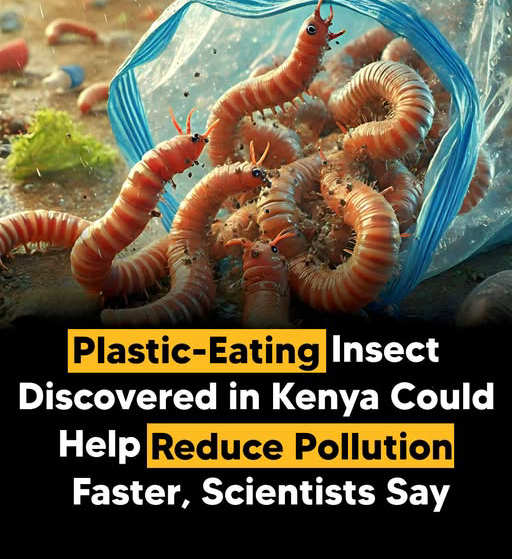Kenyan Scientists Discover Mealworm Larvae Can Break Down Polystyrene Plastic

Exciting new research from Kenya reveals that smaller mealworm larvae—tiny organisms sometimes called as Alphitobius diaperinus or darkling beetles—can break down polystyrene, a plastic notoriously difficult to recycle.
Often used in food containers, packaging, and throw-away cutlery, polystyrene—the plastic—has become a big environmental mess. Since it is non-biodegradable, it can contam the environment for hundreds of years or sit in landfills. Although recycling polystyrene is a difficult chore, this new finding might give some hope.
The larvae of the lesser mealworm bring the breakthrough. These larvae can indeed break down polystyrene, according to researchers thanks to particular bacteria and enzymes in their intestines. These bacteria reduce the dangerous volume of the plastic by breaking it down into much simpler chemicals like biomass and carbon dioxide, hence maybe changing it into less poisonous molecules.
This is remarkable since, up until recently, polystyrene was among the plastics most difficult to handle and recycle. Most of the plastic garbage we produce winds up in landfills or contaminates our oceans, where it can be quite detrimental to animals. But the mealworm larvae have demonstrated that they can "eat" this plastic, breaking it down in a naturally more ecologically benign manner.
Fascinatingly, the scientists are not advocating that we begin releasing mealworms into the wild to address the plastic issue. Rather, they advise separating the useful bacteria and enzymes from the larvae and applying them under control in a lab. In this sense, researchers could create a more industrial-scale, effective approach for recycling polystyrene.
This find has enormous promise. Should researchers be able to scale the technique, we may one day have a dependable, environmentally benign method for mass polystyrene recycling. This would assist to clean up the plastic pollution in our surroundings and substantially cut the quantity of polystyrene trash ending up in landfills.
In the battle against plastic pollution, this is a fascinating stride forward. Although it could take decades to provide broad remedies, this discovery gives us hope that nature itself could have some of the answers to one of the most urgent environmental problems facing mankind. Scientists are already investigating industrial applications for this method, which might finally result in a better, more sustainable future for our earth.
Therefore, keep in mind that even the tiniest organisms, such as mealworm larvae, could be the secret to reversing the trend on plastic pollution next time you consider the accumulating debris. It's evidence that often the most unlikely locations are where nature discovers answers.
--
